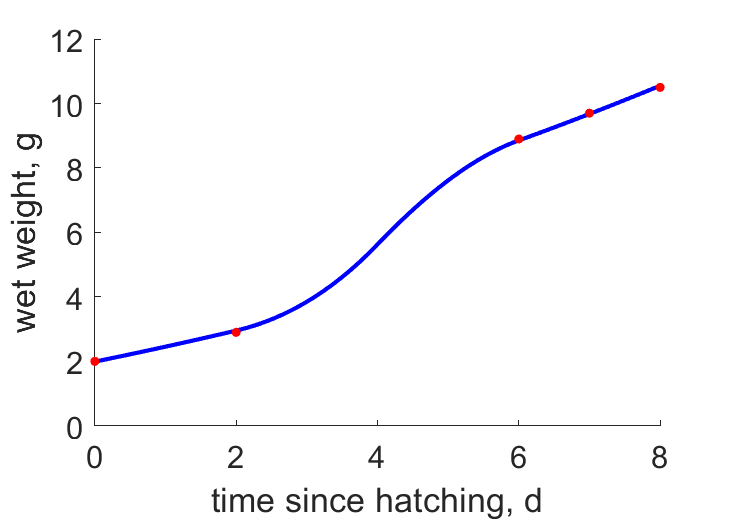Predictions & Data for this entry
| Model: std | climate: BSh, BSk, Cfa, Dfa, Dfb | migrate: Ml | phylum: |
| COMPLETE = 2.5 | ecozone: THn | food: bxCii, xiHs | class: |
| MRE = 0.004 | habitat: 0iTg, 0iTa | gender: Dg | order: |
| SMSE = 0.000 | embryo: Tnsf | reprod: O | family: |
Zero-variate data
| Data | Observed | Predicted | (RE) | Unit | Description | Reference |
|---|---|---|---|---|---|---|
| ab | 12 | 12.18 | (0.0146) | d | age at birth | Smit1968 |
| tx | 8.5 | 8.503 | (0.0003809) | d | time since birth at fledging | Walk1940 |
| tp | 25.5 | 25.48 | (0.0006296) | d | time since birth at puberty | guess |
| tR | 365 | 365 | ( 0) | d | time since birth at 1st brood | Vick1996 |
| am | 3285 | 3273 | (0.003537) | d | life span | Vick1996 |
| Wwb | 2 | 1.991 | (0.004258) | g | wet weight at hatching | Walk1940 |
| Wwi | 20.42 | 20.38 | (0.001983) | g | wet weight at ultimate state | Dela1994 |
| Ri | 0.03288 | 0.03288 | (7.156e-05) | #/d | maximum reprod rate | McNa1986 |
Uni- and bivariate data
| Data | Figure | Independent variable | Dependent variable | (RE) | Reference |
|---|---|---|---|---|---|
| tWw |  | time since hatching | wet weight | (0.005402) | Walk1940 |
Pseudo-data at Tref = 20°C
| Data | Generalised animal | Ammodramus savannarum | Unit | Description |
|---|---|---|---|---|
| v | 0.02 | 0.04566 | cm/d | energy conductance |
| p_M | 18 | 540.9 | J/d.cm^3 | vol-spec som maint |
| k_J | 0.002 | 0.02224 | 1/d | maturity maint rate coefficient |
| k | 0.3 | 0.3013 | - | maintenance ratio |
| kap | 0.8 | 0.9333 | - | allocation fraction to soma |
| kap_G | 0.8 | 0.7993 | - | growth efficiency |
| kap_R | 0.95 | 0.95 | - | reproduction efficiency |
Discussion
- Time between clutches at T is 1 year, similarly to the other members of the Emberizidae family present in the database; this value is used as parameter t_N (not estimated)
- mod_1: v is reduced, food availability is taken variable in tW data
- mod_2: Pseudo-data point k is used, rather than k_J; Data set tp and parameter t_R are added, the latter replacing clutch interval t_N. Postnatal T is based on PrinPres1991, see get_T_Aves. See further the revision page, theme puberty
Facts
- Distribution and habitat: breeding habitat is open fields and prairie across southern Canada, the United States, Mexico and Central America, with a small endangered population in the Andes of Colombia and (perhaps only formerly) Ecuador. The northern populations migrate to the southern United States, Mexico, Central America and the Caribbean (Ref: Wikipedia)
Bibliography